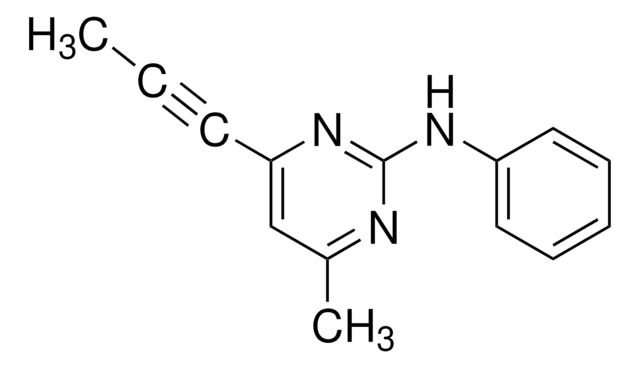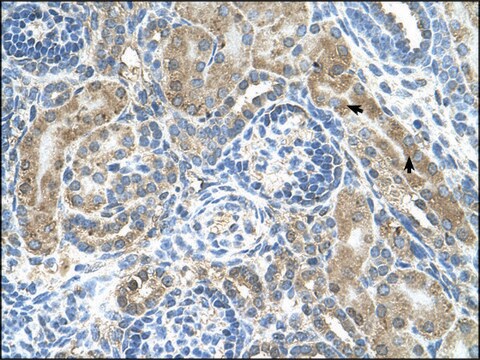Key Documents
BCR052
Benzo[ghi]perylene
BCR®, certified reference material
Synonim(y):
1,12-Benzoperylene
About This Item
Polecane produkty
klasa czystości
certified reference material
agency
BCR®
Próba
>99.7%
producent / nazwa handlowa
JRC
metody
HPLC: suitable
gas chromatography (GC): suitable
tw
>500 °C (lit.)
mp
277-279 °C (lit.)
format
neat
temp. przechowywania
2-8°C
ciąg SMILES
c1cc2ccc3ccc4ccc5cccc6c(c1)c2c3c4c56
InChI
1S/C22H12/c1-3-13-7-9-15-11-12-16-10-8-14-4-2-6-18-17(5-1)19(13)21(15)22(16)20(14)18/h1-12H
Klucz InChI
GYFAGKUZYNFMBN-UHFFFAOYSA-N
Szukasz podobnych produktów? Odwiedź Przewodnik dotyczący porównywania produktów
Komentarz do analizy
BCR052
Informacje prawne
Hasło ostrzegawcze
Warning
Zwroty wskazujące rodzaj zagrożenia
Zwroty wskazujące środki ostrożności
Klasyfikacja zagrożeń
Aquatic Acute 1 - Aquatic Chronic 1
Kod klasy składowania
11 - Combustible Solids
Klasa zagrożenia wodnego (WGK)
WGK 2
Temperatura zapłonu (°F)
Not applicable
Temperatura zapłonu (°C)
Not applicable
Wybierz jedną z najnowszych wersji:
Certyfikaty analizy (CoA)
Przepraszamy, ale COA dla tego produktu nie jest aktualnie dostępny online.
Proszę o kontakt, jeśli potrzebna jest pomoc Obsługa Klienta
Masz już ten produkt?
Dokumenty związane z niedawno zakupionymi produktami zostały zamieszczone w Bibliotece dokumentów.
Nasz zespół naukowców ma doświadczenie we wszystkich obszarach badań, w tym w naukach przyrodniczych, materiałoznawstwie, syntezie chemicznej, chromatografii, analityce i wielu innych dziedzinach.
Skontaktuj się z zespołem ds. pomocy technicznej![Benzo[ghi]perylene analytical standard](/deepweb/assets/sigmaaldrich/product/structures/154/740/c50ff1be-dfb4-4159-a98c-9cecf9206ad3/640/c50ff1be-dfb4-4159-a98c-9cecf9206ad3.png)



![Benzo[k]fluoranthene for fluorescence, ≥99%](/deepweb/assets/sigmaaldrich/product/structures/277/320/3e615f9f-3887-40f6-b176-bc1eb9b4832c/640/3e615f9f-3887-40f6-b176-bc1eb9b4832c.png)



